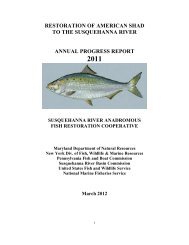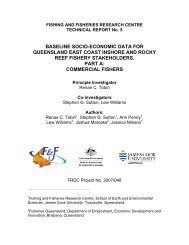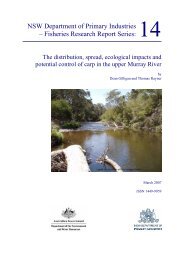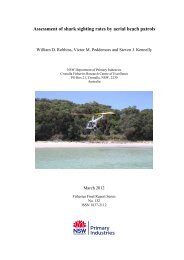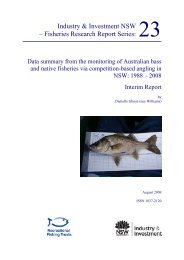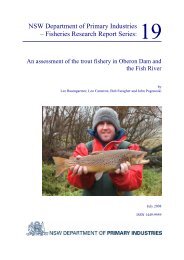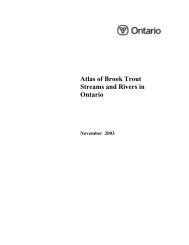Tuolumne River Flow-Inundation Report - U.S. Fish and Wildlife ...
Tuolumne River Flow-Inundation Report - U.S. Fish and Wildlife ...
Tuolumne River Flow-Inundation Report - U.S. Fish and Wildlife ...
You also want an ePaper? Increase the reach of your titles
YUMPU automatically turns print PDFs into web optimized ePapers that Google loves.
were taken over the span of almost 10 years, the authors feel that it was appropriate for the<br />
intended analyses to edit the layers to try to approach some semblance of consistency. When<br />
there was lack of agreement between layers, other adjacent flows were examined to determine<br />
which layer(s) would be modified <strong>and</strong> which would be used as a model for the change. Editing<br />
was generally needed when the wetted perimeter on a lesser flow layer extended farther than that<br />
of a greater flow. In this case these layers would be compared with the adjacent layers above<br />
<strong>and</strong> below <strong>and</strong> a judgment made on which of the first two layers was more in agreement with the<br />
others. The perimeter of the layer in lesser agreement was then modified. In addition, some<br />
small, disconnected, areas in the 100 <strong>and</strong> 230 cfs layers were modified to provide continuity of<br />
flow in the main, or low-flow, channel. In some instances the perimeters were directly over each<br />
other in channel areas with relatively steep channel banks.<br />
USGS georeferenced topo layers <strong>and</strong> National Agricultural Imagery Program (NAIP) imagery<br />
taken at known flows were used for the truthing of features <strong>and</strong> identifying locations on the<br />
polygon layers. The U.S. Department of Agriculture acquires the NAIP imagery during the<br />
agricultural growing seasons in the continental U.S. A primary goal of the NAIP program is to<br />
enable availability of digital ortho photography within a year of acquisition. Most of the NAIP<br />
imagery was taken on June 11 <strong>and</strong> 12, 2005, when discharges below La Gr<strong>and</strong>e Dam were<br />
4,030 cfs <strong>and</strong> 4,070 cfs respectively. The approximately 5 mile area from La Grange dam to<br />
about RM 47, however, was flown on June 29 with the discharge at 2,680 cfs.<br />
After modifications to all layers were finished, total area in acres was recalculated for all the<br />
remaining polygons for each flow/layer. Area versus discharge was plotted for all flows in<br />
MS Excel 2003. After review of this plot, it was decided to focus on the area of inundation out<br />
of the channel to simulate overbank areas. The three lowest flows were dropped <strong>and</strong> the area<br />
value at 1,100 cfs was subtracted from the remaining higher three values. The resulting<br />
overbank area values were then plotted versus discharge.<br />
In addition, the original, unedited, wetted perimeter polygon layers <strong>and</strong> NAIP imagery were<br />
examined to explore at what flows the pits began filling with water <strong>and</strong> at what flows they<br />
possibly connected with the channel.<br />
RESULTS<br />
The area versus discharge curve including in-river channel is displayed in Figure 2, with the<br />
tabular data in Table 2. This area includes the area of the. A primary inflection is seen around<br />
1,000 cfs, which suggests that this is the minimum point where flows may begin to become<br />
“overbank”, or out of the channel <strong>and</strong> into the former floodplain. However, as there is no data<br />
between 1,100 <strong>and</strong> 3,100 cfs the actual initiation of overbank flow is between these two values.<br />
USFWS, SFWO, Energy Planning <strong>and</strong> Instream <strong>Flow</strong> Branch<br />
<strong>Tuolumne</strong> <strong>River</strong> <strong>Flow</strong>-<strong>Inundation</strong> <strong>Report</strong><br />
August 19, 2008<br />
5




